Careers that Build the Montana Dream
moderated & edited by Aaron Kampfe
location photography by Kene Sperry
The construction trades build the heart, lungs, bones, and nervous system of the home. A house would not function without plumbing, HVAC (Heating, Ventilation, Air Conditioning), framing, and electrical systems. While the architects and interior designers often get the attention, the tradespeople make it function.
In the fall of 2023, four construction business owners gathered in northeast Bozeman to discuss the role of the trades in the building industry. The Round Table panel consisted of Tim Delph of Hometown Heating and Cooling, Erik Chidester of PJ’s Plumbing and Heating, Eugene Graf of EG Construction, and Nate Boersema of SBC and Montana Timbers. They began by touring the showroom and yard of Simkins Hallin, a Gallatin Valley building supply institution since 1946. Then they moved down the street to Pearson Design Group, one of Montana’s premier architectural firms, where they continued their conversation.
What has been true for generations in the past is still true today: careers in the trades provide solid incomes, ongoing training and advancement, and pride in workmanship. In the Gallatin Valley, a plumber, HVAC technician, carpenter, electrician, or welder can provide for their families, work in a dynamic and technologically advancing industry, and access all of the perks of the mountain lifestyle. Not only do the trades offer access to the American dream, but they also offer careers that build the Montana dream.
Hear from four trade professionals who help make that Montana dream happen.
whj : (Aaron Kampfe): What are the merits of a career in the construction trades?
Tim Delph (Hometown Heating and Cooling): Today, when you ask a young person, “What do you want to be when you grow up?” the response might be, “a social media influencer.”
[everyone laughs]
Tim: When I grew up the response might be doctor, lawyer, businessman, or engineer.
Erik Chidester (PJ’s Plumbing and Heating): Does any kid ever say, “I want to be a plumber”? …or an HVAC technician, welder, carpenter, or electrician?
Eugene Graf (EG Construction): Here lies our communications challenge in the building industry. The reality is that there has never been a better time to join the construction trades. Training is available, taking on college debt is not necessary, money is made right away, the pay increase trajectory is rapid, job satisfaction is high, and a very comfortable, middle-class lifestyle is attainable.
Nate Boersema (SBC / Montana Timbers): We are living in times when there is a large demand for labor and an even higher demand for skilled labor. This is especially true in our region of Montana. Construction continues to be strong in the Gallatin Valley and Big Sky.
The construction boom impacts all levels of the market from subdivisions in Bozeman and Belgrade to multi-million-dollar, multi-year, residential projects in Big Sky. For a larger project in the Yellowstone Club, 250 people can touch that home at some point. On any given day, 50 tradespeople could be on a single job site. This all requires skilled labor, from the office to the delivery trucks to the boots-on-the-ground.
Eugene: Tradespeople are aging and approaching retirement. They are not being replaced. The average age of a skilled tradesman might be 58 and the vacancies aren’t being back-filled. This is true in all types of construction. Because of the lack of workforce, costs are higher, and it takes longer to get jobs done.
Tim: I was recently reading an article that stated that the HVAC (Heating, Ventilation, and Air Conditioning) industry is short about 30,000 technicians across the country right now. They are predicting that in 10 years, it could be short by as much as 130,000.
Erik: A plumber’s pay scale increases rapidly as they go through the apprentice career path. We’ll start at $24/hour for a laborer. As they get their bookwork done and some experience, they get hourly pay increases. By the fourth year, they can make in the upper $30s an hour. That’s pretty good for someone in their early 20s. We are talking $80-$100K for someone who has put in the time and effort.
Nate: Whether it’s working with wood or installing mechanical systems, the trades offer a great deal of job satisfaction. You are enhancing people’s lives by offering them a comfortable home.
Tim: Few young people ever dream of being an HVAC guy or plumber. It’s not high on the list of dream jobs, but for those who get into the profession, they become in-demand technicians and craftsmen. With dedication and hard work, the trades really provide a gateway to the American dream…. and, in our region of the country, the Montana dream, where outdoor recreation is right out the door. Our crew members provide for their families and spend their off-time fishing, hunting, skiing, camping, and boating.
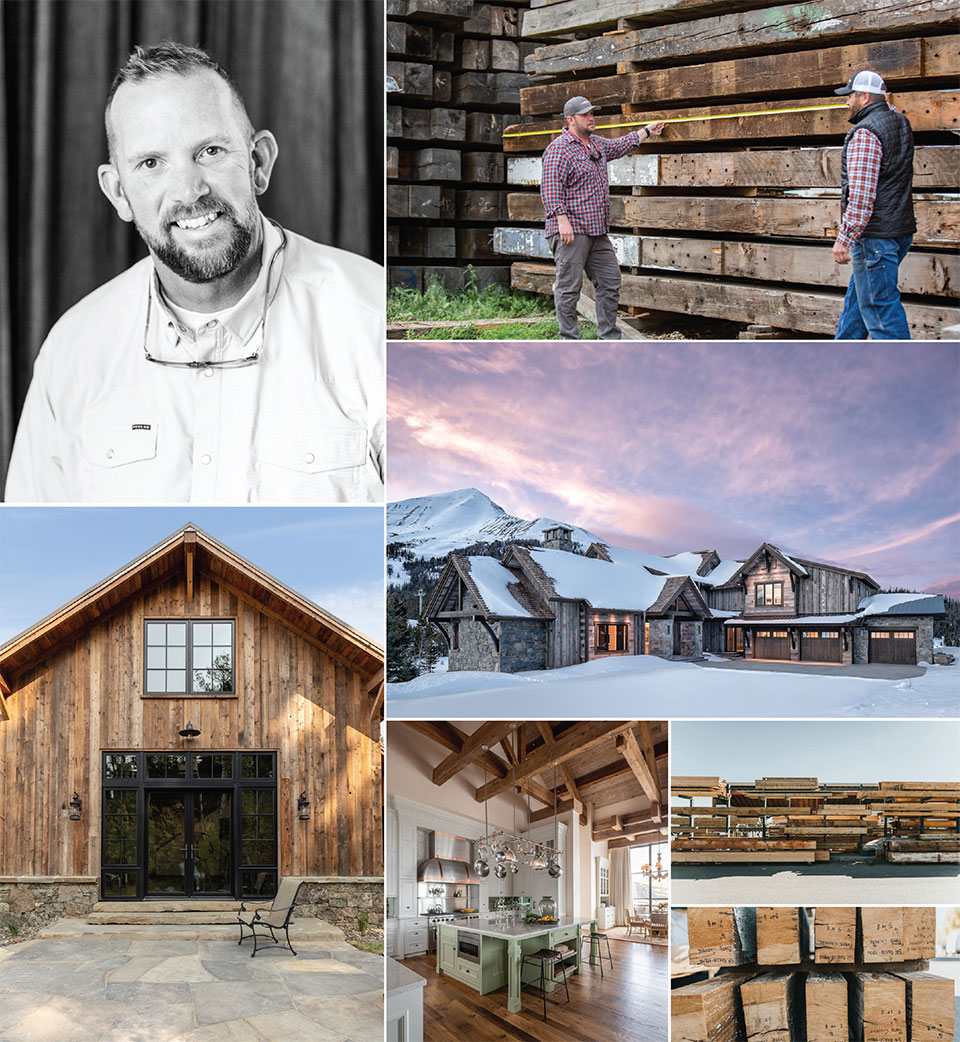
“After the dirt and dust of the construction process settles, the work of hundreds of people comes to life as a beautiful home. That is a reward truly worth working toward.”
–Nate Boersema, SBC & Montana Timbers
whj : How did you get into the construction trades?
Erik: A cute girl got me into the plumbing business.
[everyone chuckles]
I had planned to be a doctor and was on scholarship to Idaho State University. My girlfriend, who later became my wife, asked if I wanted to work for her dad over the Christmas break helping with his plumbing business. I said, “sure.” I enjoyed the work and was making money right away, so I stuck with it. Additionally, I wasn’t accumulating college debt.
In Montana, I started at PJ’s Plumbing and Heating in 2004. Ten years later PJ was ready to retire, and I said, “I’m ready to step up.” The opportunity was part luck of the draw but also required a great deal of effort and focus. Thirty years later I’m still enjoying the trade and have built the company into a much larger enterprise.
Eugene: I grew up in a home building family. There wasn’t a moment when it wasn’t a part of me. It was engrained in me that this is a good way to make a living. I worked with my father and was introduced to contractors both here in the Gallatin Valley and outside of Bozeman. As a younger person, I got a broad view of construction on jobsites in Sun Valley and North Dakota. This exposed me to a wide spectrum of building. I realized that I could come back to Bozeman and start my own company. I’ve been working at it every day for coming up on 20 years.
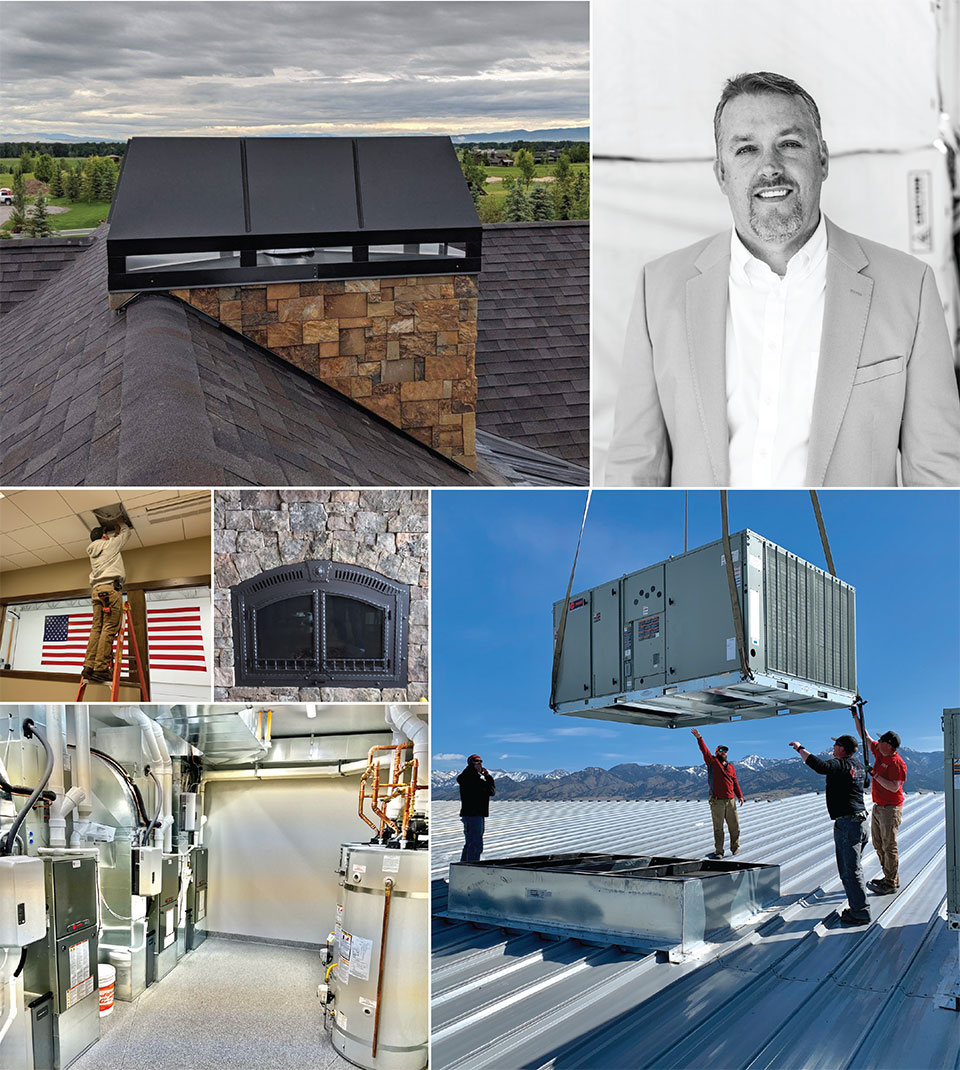
“In most ways, age-old values—drive, self-motivation, honesty—are still the foundation of success.”
–Tim Delph, Hometown Heating & Cooling
(Continued: How did you get into the construction trades?)
Nate: My story is similar. I grew up in a construction family. My grandfather on my mother’s side was part of a general contracting firm in western Michigan where I was raised. My grandfather on my father’s side was a furniture maker and upholster. My dad was also a general contractor. From a very young age, I started pushing a broom and helping out wherever I could, so I appreciate every aspect of the construction process from the ground up.
Following a short stint of college in Big Rapids, Michigan, I wanted to see what else was out there. I enrolled in Great Lakes Boat Building School to learn the art of wooden boat building. It ignited my passion for woodworking. I thought of carpentry as just framing walls in tract houses but came to realize that there is a lot more you can do with wood and lumber.
I moved to Bozeman in 2000. I started working for a company that specialized in reclaimed lumber and log construction. At that time, we were a sub-contractor for SBC. That is how I got acquainted with Mike Schlauch, Jamie Bottcher, and Chad Bottcher. I’m now a partner with SBC and have been with them for 22 years. The career journey has been a great run, and I wouldn’t change it for anything.
Tim: My story is similar to Erik’s. I was a newlywed with a baby in the house. My family by trade are fishing guides. Naturally, I wanted to fish for a living. Long story short, it didn’t pan out with kids to feed and bills to pay, so I got into the trade. Just like what we’re talking about, I got on-the-job training and got paid while I was doing it.
Starting out, I was out in the field and taking care of the customers while my wife, Brooke, was running everything out of the home office. I don’t know who was busier, probably her. She’s absolutely integral to the company’s success.
Over time, we expanded our facilities and I started to hire guys. Ever since we started, I was committed to making sure we did things right. Every job was of a high level of quality. Everyone’s home is important. Every family is important.
My dad always engrained in us that whatever you do, do the best you can. Even if you’re picking up trash, be the best trash collector. Brooke shares these same values. She is a true perfectionist and that value for quality work trickles down to everything the company does.
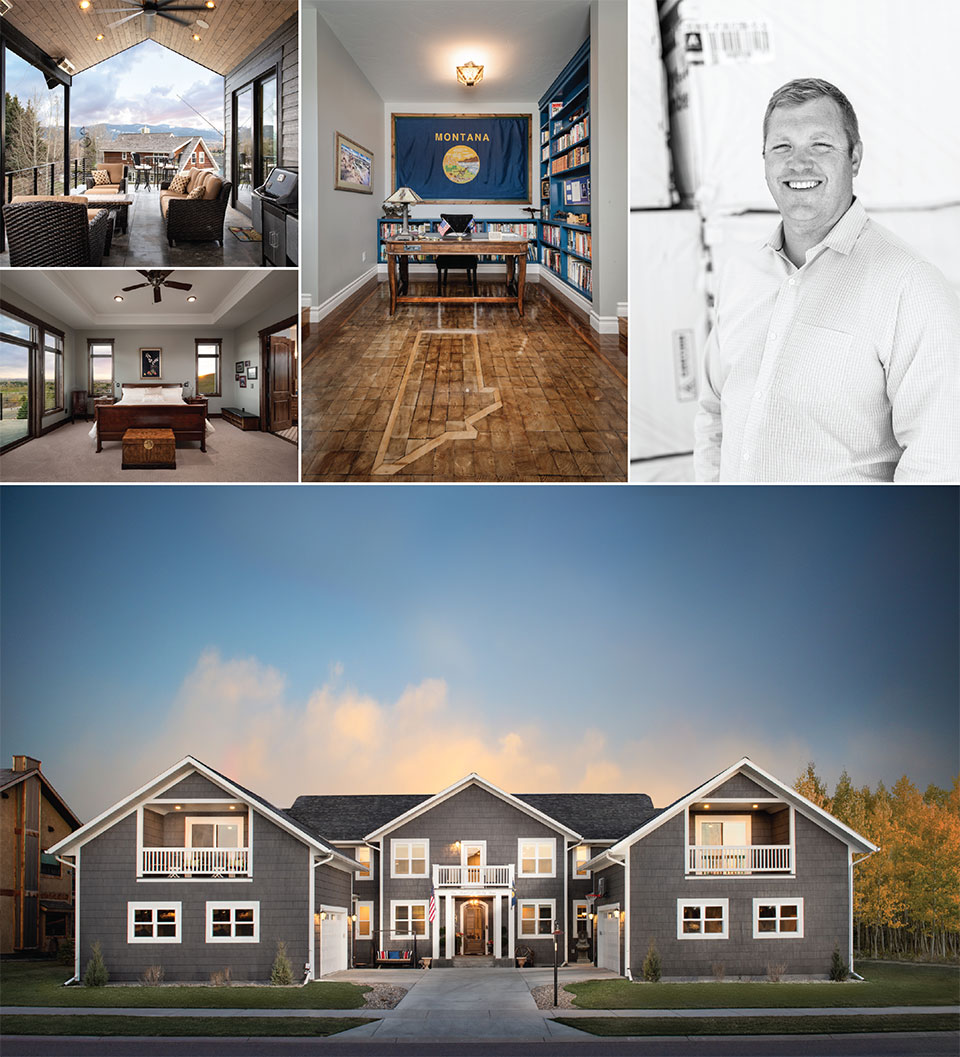
“The reward is delivering a home to an appreciative customer who understands what goes into building it. When a young family gets the keys, they are launched to a happy future. This provides a great deal of satisfaction.”
–Eugene Graf, EG Construction
whj : What training and certification is involved in each of your respective businesses?
Erik: Like most places in the country, Montana has plumbing apprenticeship and licensing programs. PJ’s, as a company, supports our employees along every step of the way. They work their way up from a laborer to Journeyman Plumber in as little as four years. With only a few more years of experience they can then obtain a Master Plumber license should they choose that path.
We have in-classroom training plus support to get the bookwork done. When guys are working 40-plus hours a week, this can be an additional burden, especially for those with families. With hourly pay raises and educational cost reimbursements, there are plenty of incentives to reach the next level of certification.
Tim: Montana doesn’t require any training or certification to install or service HVAC, which has some obvious issues. When we started our company, I was attending as many training opportunities as I could make time for. What I found out was that much, if not most of what I was taught by other technicians was wrong. They had been taught many “rules of thumb” or “old-school” techniques that may have been acceptable back in the day, but they were not industry standard.
I wanted to change that and train better technicians who are qualified to do it the right way, every time. We are in the process of building a large addition to our office that will include a 2,100-square-foot training facility with a lab that has multiple functioning equipment for live training and development. Hands-on is always the best training in my opinion, and I want our technicians to not only see functioning equipment but also see the advanced equipment that is leading us into the future of HVAC. With everything being computerized in some manner or another, we need to be on top of these changes as they are happening.
Eugene: Getting into general construction has no prescriptive path. There are no requirements, licensing, or certifications in Montana. I’ve traveled to Japan, Germany, and other places where there are robust training programs and certifications. Here, we’ll take anybody who is willing to show up, learn, and put forth effort.
I don’t like seeing school systems scaling back on industrial arts curriculum in high schools. We all grew up with shop class and learned the basics and an appreciation of the craft. By the time people get older, their interest may be gone.
Nate: Like Eugene’s company, no formal job requirements are necessary for a number of positions. We offer training opportunities for folks who are willing to work hard and are interested in learning a trade.
Gallatin College right here in Bozeman has a program called jobsite ready—general carpentry and construction. Scholarships are available. This core-skills program includes 30 hours of self-guided online plus 15 hours of practical lab experience. Once completed, the program gives potential employees the confidence and general knowledge to apply with a contractor.
whj : What is the role of technology?
Tim: Younger people are more agile when it comes to technology and technology is constantly changing how we build homes. Wireless apps and sensors are built into the equipment. Systems are Bluetooth-connected with automated processes. Technology allows some components to be diagnosed quickly so we are more efficient.
Eugene: Everyone has access to iPads in the field. So, if something gets changed in the office, the modification gets to them immediately. The on-the-ground crew only sees the most current version of the plans.
Everything in the home is talking to each other. I can pull it up on my phone. I can see my garage door, who is delivering the mail, the cycle of my washer and dryer, the indoor and outdoor temperatures… everything is connected.
Tim: We have seen a lot of smart home advancements in the industry. The IoT (Internet of Things) now includes HVAC equipment and accessories, so that has grown quite a bit. Montana has a dry mountain desert climate, so humidification is very beneficial to the home and its occupants. COVID brought a lot of attention to the air purification market as well, and the ability to eliminate odors, allergens, and pathogens like mold, bacteria, and viruses from the air and exposed surfaces has really made an impact.
The industry is investing a lot into cold-weather heat pumps, which have some great benefits. They can provide effective efficient heating down to -24°F or possibly colder, but we still must have a dependable auxiliary source of heat for our extreme weather when it gets down to -40°F. We’re talking about life-threatening weather here, so we can’t be loose with our ability to properly heat a home in our area.
Erik: Plumbing systems are becoming more and more sophisticated. From your standard three-bedroom home to luxury chalets at the resorts, home technology continues to become more advanced and complicated. The expectation of the client is higher too. After skiing, all 15 members of the household want a hot shower. As a company, we love the challenge and work to keep on top of the new technology.
Nate: While some young people gravitate to digital tools, others find satisfaction in old-school craftsmanship. In the timber trades, we use chainsaws and chisels to create and build with reclaimed lumber. That said, the software helps communications. All the information is in one spot—schedules, plans, email communication, budgets, delivery logistics.
whj : What part of your job is the most fun and rewarding?
Eugene: We provide homes where people are going to raise their families. The reward is delivering a home to an appreciative customer who understands what goes into building it. When they get the keys, they are launched to a happy future. This provides a great deal of satisfaction.
The other reward is the day-to-day. The fun is seeing the crew leaving a jobsite and being proud of what they’ve done. At the end of the day, we, as business owners, get to provide solid careers for people.
Erik: I enjoy seeing something created using one’s own hands. Our crews are made up of people who are mechanically inclined. They’re not going to be looking at a book or computer screens for a long period of time. Their intellectual abilities are tied into their spatial, analytical, and physical abilities.
Tim: We genuinely enjoy seeing our team members succeed in life. We put our trust in them to provide the best experience for our customers and they should be able to trust us. We try to be very flexible with our staff so that they have a quality of life that allows them to be there for family during hard times and leave early to be there for a recital, a game, or anything that has inherent value in their lives. We also want to provide opportunities to grow into new and developing positions as the opportunity arises so that there is always a future for them. I feel like we have a “family” dynamic in the company, and you will often see or hear of our teams getting together on weekends or afternoons to go do things with each other.
Nate: For me, it’s seeing the final project come together. For most of SBC’s work, it is the client’s dream home, a home that the owners have worked hard in life to obtain. The construction process takes hundreds of people to create it. I enjoy watching that creative process unfold and being a part of it.
Erik: Cutting-edge products and processes make their way to our region of Montana. Often, this comes from second homeowners who are building their dream homes in the mountains. They are requesting the latest products and have high expectations. They have seen something back in New York or LA or on a trip to Europe and want it in their Montana home. Sometimes, we might be the first person to install it in the Rocky Mountain region.
Eugene: It’s a challenge too because they’ve seen it somewhere else or in a magazine like Western Home Journal. Now we have to find it, figure out how it is installed, and optimize its functioning.
Nate: When thinking about the home building process, we use the messy kitchen analogy. In a kitchen you have raw ingredients, tools, equipment, and plans. On top of all of that, you have the human aspect, the people who assemble and create. The process can be challenging, but when it is finished, it is truly a work of art and something to take pride in.
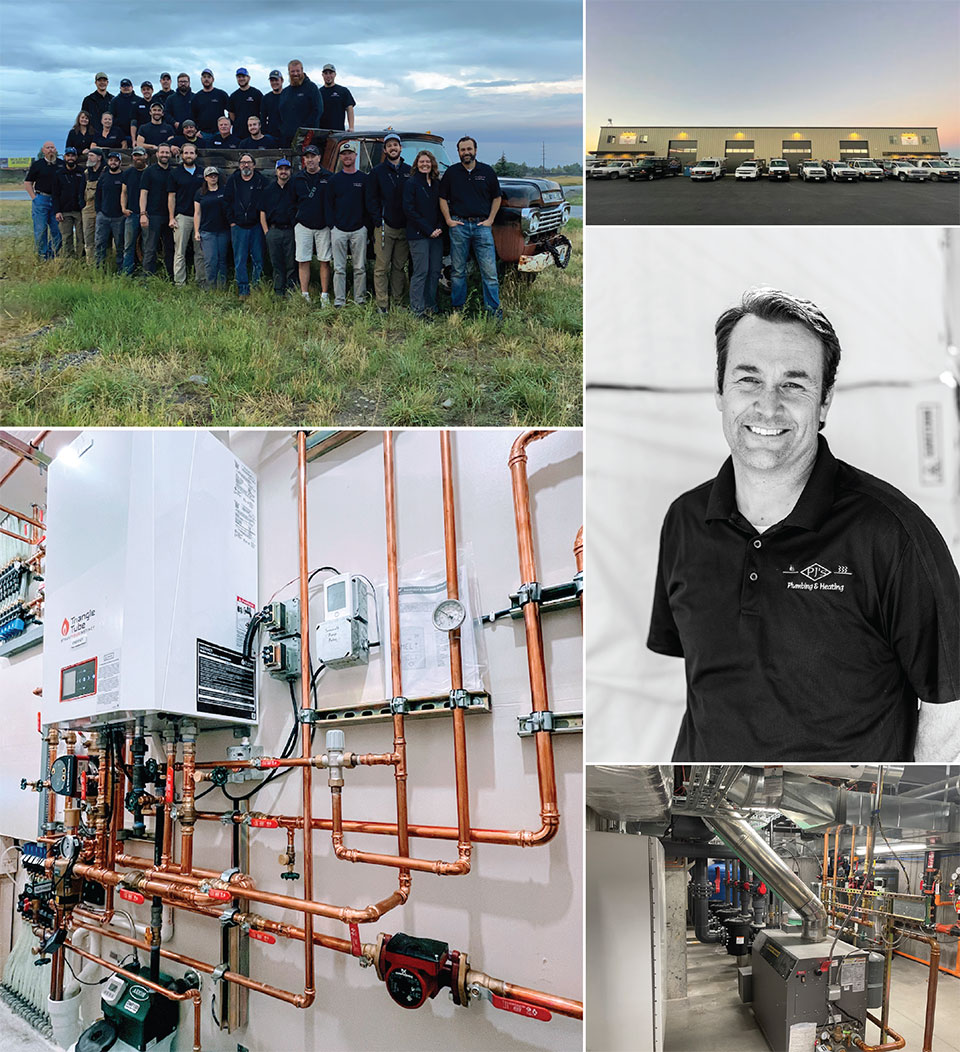
“The mechanical room is the heart of the home. It’s the heart, lungs, and nervous system. People take it for granted.”
–Erik Chidester, PJ’s Plumbing & Heating
whj : How is the newer generation going into the trades differently?
Tim: In most ways, age-old values—drive, self-motivation, honesty—are still the foundation of success. We really try to hire someone based on their character first and talent/experience second. I can train a young person to be a skilled technician, but I can’t train someone to be punctual, hard-working, or ethical.
In general, this younger generation is ambitious, tech-savvy, adaptable, and willing to learn. These characteristics make for great team members in our organization. We really do try to play to each individual’s strengths. A lot of skill sets are required—installation, service, replacement, design, development, logistics, management, finances, organization, scheduling, dispatch etc… and we’re there to support our hires as their skill-base expands.
Eugene: I was a college athlete and it’s hard to coach “hustle.” If they don’t get it growing up, they show up on a job site and drag their feet. Of course, yelling at them doesn’t work, which is what most of us probably got as a kid. We find other ways to motivate, and our approach has become a little “softer” with this generation.
Nate: Keeping new hires engaged and novel things in front of them goes a long way. If you see someone who is showing that passion, let’s keep challenging them. We’ll find them a position that fits.
Eugene: Money alone doesn’t do it.
Tim: In the past, if you looked at a resume and saw multiple jobs, you might pass the candidate over. This newer generation loses interest quickly. We need to shift the narrative to how do we attract and retain this newer generation. Talent gets bored and we need to provide new challenges.
whj : What is your ideal working relationship with architects?
Nate: Early team integration is key with the architects and any designer. The sooner you can build your team, the greater the success. Including all of the trades is important because they all relate to each other. The air systems, plumbing, electrical, and structure all must work together.
Tim: Coordinated early planning goes a long way. We have been known to be “miracle workers,” but sometimes there are issues that can be avoided by a preliminary meeting ahead of the construction process. Our years of experience has taught us what can be done, what might be possible, and what flat-out won’t work. We can be a great resource for architects and engineers when there are early coordination meetings.
Nate: With reclaimed lumber, certain beam sizes and selections can prove to be challenging to source and locate. We always appreciate the opportunity to work with an architect during the design process, keeping in mind the unique and available materials.
Eugene: Whether it’s early or late in the design and construction process, the best results are when the team keeps an open mind to accept change. At times we need to pivot or adjust, and that even includes the homeowner.

Tim: The architects and interior designers get the credit in the glossy photos—credit that they do deserve, of course. If we do our job right, the homeowner will never know we were there and we deserve credit for being invisible.
Erik: The mechanical room is the heart of the home. It’s the heart, lungs, and nervous system. People take it for granted.
Tim: Never do you see a picture of the mechanical room in a real estate ad or home magazine.
[everyone laughs]
Aaron: Maybe I can help change that?
Nate: If you think about a home as a Ferrari, most people initially only admire the exterior—the paint job, sleek lines, and tires. Those of us in the trades look under the hood. We want to see the engine and all the corresponding systems. That is really what makes a Ferrari a Ferrari.
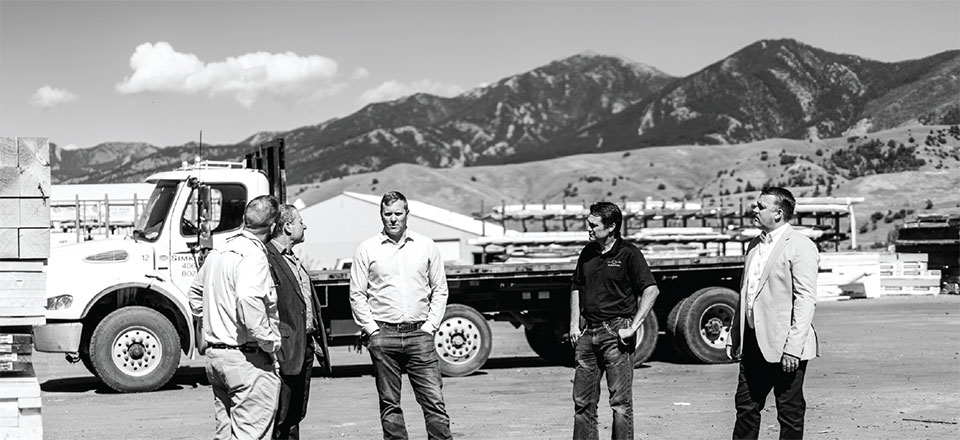
Q&A with Stephanie Gray, Dean—Gallatin College
whj : What training and programs does Gallatin College offer that prepare people for careers in the construction trades?
Gallatin College has several programs that prepare students for construction trades: Carpentry, HVAC-R, Design Drafting and CAD, Interior Design, and Welding. We train for specific technical skills and are able to add professional development content such as communication, teamwork, problem-solving, and life skills.

whj : What are the advantages of technical careers?
High demand and high wages are the immediate advantages for our students. Students can make an initial small investment in their education and within a year be working in their particular field. In a short amount of time, they are working alongside other professionals, earning a wage, and starting their careers. Another advantage to attending Gallatin College is the opportunity to network with all of our industry partners. We help students find the best fit.
whj : How are you working with private industry to develop programs?
Each of our trades programs has bi-annual industry partner meetings. Gallatin College wants as many partners participating as possible! At these meetings we share our curriculum, introduce faculty, encourage feedback from industry leaders on what we are teaching, recruit guest speakers, and offer site visits. Gallatin College also hires people from the industry as faculty and accepts equipment donations. This keeps our curriculum up-to-date and our training relevant.

“High demand and high wages are the immediate advantages for our students. Students can make an initial small investment in their education and within a year be working in their particular field.”
–Stephanie Gray, Dean, Gallatin College
